Contents
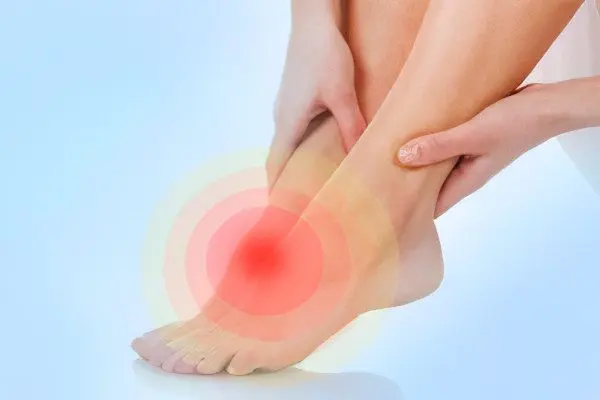
Hygroma of the foot – This is a cystic formation of a round shape, which is located under the skin. Inside it is filled with jelly-like contents. The hygroma shell is represented by connective tissue. This is a benign tumor that does not have the ability to regenerate.
Hygroma of the foot occurs from the tendon sheaths, or has a connection with the joint capsule. Therefore, the tumor is always located in the immediate vicinity of the joints.
Most often, people develop hygroma of the wrist joints. In the foot area, tumors form less frequently. They can be located on the back surface of the metatarsus or toes, or on the anterior outer surface of the ankle joint.
Although hygromas are not malignant, they can become inflamed and painful. Most often this happens due to excessive friction of the tumor on the shoe, or when it is injured. Therefore, they should not be left unattended. The sooner the hygroma is removed, the faster the process of tissue repair will go.
Causes of foot hygroma
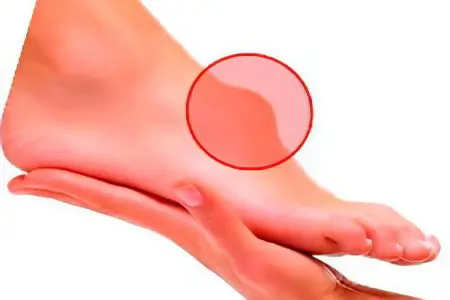
Until now, doctors cannot identify all the factors that influence the formation of hygroma. However, some reasons leading to its development are known.
They include:
Inflammation of the joints or tendons of the lower extremities.
Genetic predisposition to the formation of hygroma. It has been established that such tumors appear more often in blood relatives.
Daily intensive load on the foot. At risk for the formation of a hygroma of this localization are people of such professions as: loaders, athletes, teachers, sellers, etc.
Injuries to the tendons and joints of the foot. After receiving a single injury, hygromas form in 30% of people.
Wearing uncomfortable shoes that press or rub on the foot, injuring the tendon. In women, foot hygroma may appear if she constantly wears high-heeled shoes.
Flat feet. In this case, a hygroma can form on the sole. The arch of the foot in such people is poorly developed, and the tendons are constantly injured.
In general, being female is a risk factor for the formation of hygroma. In men, such tumors are formed 3 times less often.
The mechanism of formation of foot hygroma
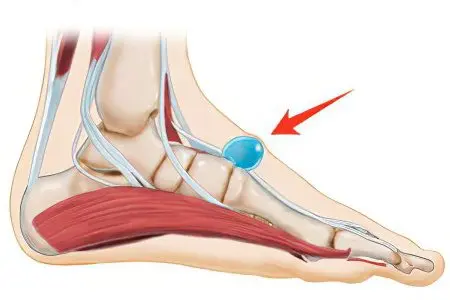
The mechanism of hygroma formation is as follows:
The tendon sheath or joint capsule is exposed to a pathological factor. Their cells are reborn.
A capsule forms in the affected area. It is represented by metaplastic connective tissue cells: spindle-shaped and spherical.
Spindle-shaped cells form the shell of the capsule, and spherical cells are filled with fluid. It enters the intercellular space and fills the tumor.
Hygroma grows and develops, begins to put pressure on blood vessels and nerve endings.
If the hygroma is removed in time, then complications in the form of pain, inflammation and deterioration of tissue nutrition can be avoided.
Symptoms of foot hygroma
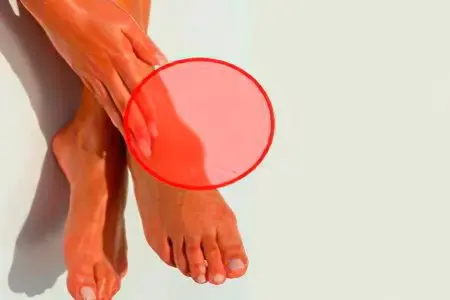
In past years, the hygroma was called the tendon ganglion, so this term is still found in the medical literature to this day. A tumor is formed near the serous bag of the joint. The hygroma itself does not have nerve endings, but can put pressure on the nerve fibers that are located in the tissues surrounding it.
Hygroma can be soft, elastic or hard. It all depends on the concentration of fibrin and mucus that fill the tumor. The harder the hygroma, the more discomfort it gives to a person.
Hygromas are prone to constant growth. They slowly increase in size. The average diameter of the tumor is equal to 3 cm, although sometimes it can reach 6 cm or more.
For a long time, the hygroma may not manifest itself. Pain occurs as a result of her injury, or pressure on the nerve fibers. Most often, the tumor is single, but sometimes several cysts form at once in the area of the joint and tendon.
The main symptoms of foot hygroma are as follows:
The presence of a subcutaneous tumor, which has clear contours. When you press it, it is soft, elastic or hard.
The tumor has poor mobility, as it is connected to the tendon, or to the synovial bag of the joint.
The skin is not changed, pain is most often absent.
If the hygroma is located in close proximity to the nerve fibers, or begins to put pressure on them as it grows, the person will experience discomfort.
Hygromas located on the plantar part of the foot have a dense structure, they are motionless. Such tumors are often confused with bone growths.
Complications of foot hygroma
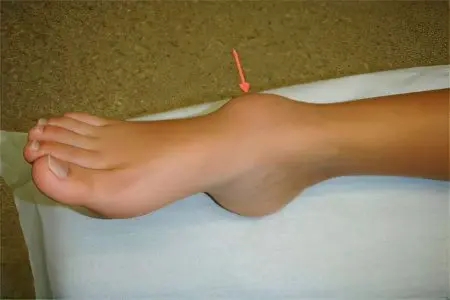
If the vessels supplying the lower limb are pinched, this leads to such complications as:
Decreased sensation in the foot. In this case, the part of the leg that is located below the place of compression will suffer.
The emergence of a feeling that “goosebumps” are crawling up the leg. The foot may tingle.
The appearance of pain of the type of “lumbago”.
Decreased blood supply to the foot. At the same time, her skin becomes dry, thinned. Toenails may begin to break down.
Due to nutritional deficiencies, pustular rashes may appear on the skin.
If the veins of the limb are pinched, then the legs will begin to swell.
If the vessels are strongly compressed, then the foot changes color, it can become cold to the touch.
Local inflammation develops when shoes press on the hygroma. Therefore, a person has to choose the most spacious pairs. If this condition is not observed, then the patient may develop tendovaginitis or bursitis.
If the hygroma is located on the sole, then it will be constantly injured. Such tumors should be disposed of as soon as possible.
Diagnosis of foot hygroma

Diagnosis of foot hygroma is not difficult, since this neoplasm has its own characteristic features.
However, a differential diagnosis should be made with pathologies such as:
Lipomas.
Atheroma.
Bone or cartilage tumors.
To clarify the diagnosis, the doctor will refer the patient to an ultrasound examination. This method allows you to visualize the cyst, evaluate its structure, check for the presence of blood vessels in it, etc.
If the doctor has doubts about the benign neoplasm, then the patient is referred for an MRI. This highly informative method allows you to clarify the presence of nodes in the hygroma, to evaluate its contents.
Another diagnostic method is tumor puncture. The doctor punctures it with a syringe, and then takes the contents of the hygroma. In the future, it is sent for a histological examination, which allows you to determine the presence of malignant cells in the exudate.
Treatment of foot hygroma
It will not be possible to cure the hygroma on its own. To get rid of the neoplasm, you need to contact one of the specialists: an orthopedist, a surgeon, a traumatologist. After the examination, the doctor will decide on the tactics of managing the patient. It is important not only to remove the hygroma, but also to direct efforts to eliminate the causes of its occurrence. Patients with flat feet will have to wear orthopedic shoes, women will have to refuse to buy high-heeled shoes. If a person has tendovaginitis or bursitis, then these diseases are subject to therapeutic correction.
Conservative treatment of foot hygroma
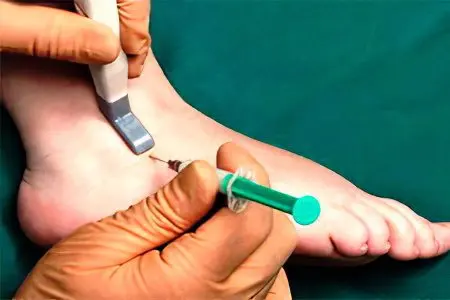
Conservative methods of treatment do not allow to cope with hygroma. It was experimentally established that after any manipulations with the tumor, with the exception of surgery, it recurs again.
In past years, they tried to remove the neoplasm using methods such as:
Performing a puncture. At the same time, the hygroma will definitely recur in the future, since the cells that produce fluid are part of its shell, and it remains inside the tissues. A puncture for therapeutic purposes is used in the current conditions, but it is done only if a person has contraindications to surgery, and the hygroma worsens the quality of his life, for example, it greatly interferes with walking.
Introduction to the hygroma of steroids and sclerosing drugs. This method is dangerous because such medications can get on healthy tissues of the tendon or joints and cause inflammation.
Kneading and crushing the tumor. This is a dangerous and ineffective method of its treatment, which in 100% of cases leads to a relapse.
Physiotherapy. Apply UHF, salt baths, electrophoresis with iodine. These methods do not allow to cope with hygroma. With their help, you can only reduce the inflammation of the surrounding tissues, if any. Thus, physiotherapy is only a preparatory stage before the operation to remove the hygroma.
With suppuration of the tumor, antibiotics are used, but surgical intervention is a prerequisite in this case. Antibiotics are used both before the operation and after it is completed.
[Video] Doctor Egorov – hygroma of the hand. Get rid easily!










Allah ömrünüzü uzun eləsin, Anamın ayağında var bundan, qorxmuşdumki nəsə pis bir şeydir. Var olun.